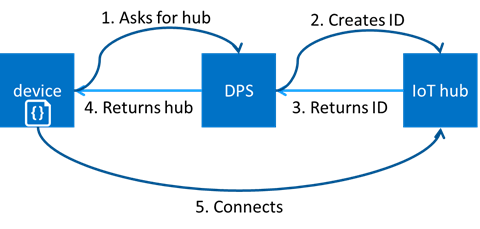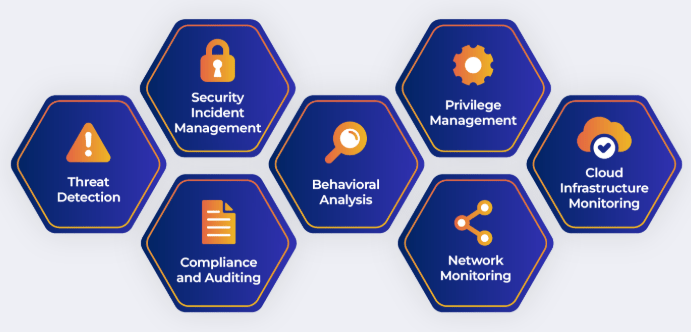
- Introduction: What is Azure Log Analytics?
- Key Features of Azure Log Analytics
- Benefits of Using Azure Log Analytics for Your Cloud Infrastructure
- How Azure Log Analytics Works: A Technical Overview
- Key Use Cases of Azure Log Analytics
- Setting Up Azure Log Analytics: A Simple Guide
- Best Practices for Using Azure Log Analytics Effectively
- Conclusion
Introduction: What is Azure Log Analytics?
In today’s fast-paced IT environment, the ability to monitor and diagnose applications and infrastructure is critical. Azure Log Analytics is a powerful tool in the Azure Monitor suite, designed to help businesses track, analyze, and gain insights from log data generated by various applications and infrastructure components within Azure environments. Log Analytics is a service that collects, analyzes, and visualizes data from a wide array of sources, including virtual machines, applications, networking components, and operating systems. This makes it a valuable solution for both troubleshooting and proactive monitoring of cloud-based systems, which is a key focus of Microsoft Azure Training, where professionals learn to leverage Azure tools for effective monitoring, diagnostics, and optimization of cloud infrastructures. Essentially, Azure Log Analytics provides organizations with the ability to centralize their log data, giving them better visibility into system performance, potential issues, and overall health. As an integral part of Azure Monitor, it helps businesses maintain operational efficiency, enhance security posture, and improve troubleshooting workflows. In this comprehensive guide, we’ll explore the features, benefits, and use cases of Azure Log Analytics, how it works technically, and how you can set it up and use it effectively in your Azure environment.
Are You Interested in Learning More About Azure? Sign Up For Our Azure Training Today!
Key Features of Azure Log Analytics
- Centralized Data Collection: Log Analytics collects data from various sources such as Azure resources, on-premises servers, and applications. These can include performance metrics, operational logs, and diagnostic data, all centralized in one place for easy access and analysis.
- Kusto Query Language (KQL): The service uses Kusto Query Language (KQL), a powerful query language that allows users to filter, aggregate, and analyze vast amounts of log data. KQL is highly efficient and designed to handle large-scale data sets, enabling deep querying and precise insights.
- Data Retention and Storage: Log Analytics stores the log data for configurable retention periods, typically ranging from 30 to 365 days, depending on your needs, which is essential when planning disaster recovery strategies with Azure Site Recovery, as it helps maintain logs for monitoring and troubleshooting replication processes over time. This allows users to perform historical analysis and investigations based on stored logs.
- Integration with Azure Services: Azure Log Analytics integrates with other Azure services like Azure Security Center, Azure Automation, and Azure Sentinel, providing a comprehensive monitoring and security management suite.
- Custom Dashboards: Users can build custom dashboards in the Azure portal that display visualizations based on the data collected by Log Analytics. These dashboards can provide real-time insights into the health, performance, and security of your environment.
- Alerts and Notifications: Log Analytics allows you to set up alerts based on specific log queries or thresholds. If certain conditions are met (e.g., performance degradation or security breaches), users can be notified via email or other communication channels.
- Workbooks: Workbooks in Azure Log Analytics enable users to create custom reports and visualizations. These workbooks can pull data from multiple sources, allowing you to perform deeper analysis and present findings in an accessible format.
- Advanced Analytics: Azure Log Analytics supports advanced analytics using machine learning to detect patterns, anomalies, and correlations in log data. This helps businesses proactively identify potential issues or security threats.
Azure Log Analytics offers a wealth of features that help organizations gather, analyze, and visualize logs from a range of Azure resources. Here are some of the key features:

Benefits of Using Azure Log Analytics for Your Cloud Infrastructure
Azure Log Analytics is a critical component for businesses looking to gain insight into their Azure-based infrastructure. Here are several key benefits:
- Enhanced Monitoring and Visibility: Azure Log Analytics gives you deep visibility into your infrastructure by providing a centralized view of logs, metrics, and performance data. This allows you to monitor systems in real time, enabling proactive issue detection and resolution.
- Improved Troubleshooting: One of the most significant advantages of Azure Log Analytics is its ability to help diagnose and troubleshoot issues in your infrastructure quickly. By querying log data and generating custom reports, you can pinpoint the root causes of problems, reducing the time spent on troubleshooting and minimizing downtime.
- Security Insights and Compliance: Azure Log Analytics can be integrated with Azure Security Center and Azure Sentinel to provide detailed security insights, a feature that complements the Introduction to Azure Arc, where users learn to extend Azure management and security capabilities across on-premises, multi-cloud, and edge environments.
- Scalability: Log Analytics is designed to scale with your infrastructure. Whether you are monitoring a small application or an enterprise-wide system, the service can handle large volumes of log data, ensuring that you don’t miss important events, even at scale.
- Cost Efficiency: Since Azure Log Analytics charges based on data volume ingested, businesses can tailor their usage to minimize costs. You can set up data retention policies to only store the most relevant data, and filter out unnecessary log information.
- Automated Insights and Alerts: Azure Log Analytics automatically surfaces insights through machine learning, reducing the manual effort needed for analysis. Alerts can be configured to notify administrators and other stakeholders when critical issues arise, ensuring faster response times.
- Seamless Integration with DevOps: Developers and operations teams can leverage Log Analytics in their DevOps pipelines for continuous monitoring and integration. The service can automatically ingest logs from containers, virtual machines, and Kubernetes clusters, ensuring complete visibility into app performance.
- Infrastructure Monitoring: Organizations can use Azure Log Analytics to monitor the health and performance of Azure infrastructure, such as virtual machines, databases, and storage. It provides detailed metrics and logs that help monitor uptime, resource utilization, and performance metrics.
- Application Performance Monitoring (APM): With Azure Log Analytics, you can monitor and analyze the performance of your applications, similar to how you can Create Alarms in Amazon CloudWatch to monitor and respond to application performance and infrastructure issues in AWS environments. It allows developers to track user interactions, application errors, latency, and dependencies across microservices.
- Security Monitoring: When integrated with Azure Security Center and Azure Sentinel, Azure Log Analytics can act as a powerful tool for detecting and responding to security incidents. It provides real-time security event analysis, alerting, and compliance monitoring.
- Compliance and Auditing: Many organizations are subject to regulatory compliance requirements, such as HIPAA, GDPR, and SOC 2. Azure Log Analytics helps organizations track and monitor data access, changes, and other events that are necessary for audits and compliance checks.
- Log Aggregation: For organizations with hybrid environments, Azure Log Analytics can aggregate logs from multiple sources, including on-premises systems, cloud environments, and third-party applications, into a central location for analysis.
- DevOps and Continuous Integration: Azure Log Analytics integrates well with DevOps pipelines, providing visibility into application performance during development and after deployment. It can monitor containerized applications, continuous delivery pipelines, and microservices, helping teams identify potential bottlenecks or failures.
- Set Clear Log Collection Policies: Define exactly what data you need to collect to avoid unnecessary log storage costs. Focus on critical metrics, error logs, and security events.
- Optimize Queries for Performance: Use efficient queries to reduce the load on your workspace. Limit the time window for queries and use filters where appropriate.
- Implement Retention Policies: Configure retention settings to automatically purge old log data that is no longer necessary for your analysis, a concept that aligns with the Cloud Computing Course Syllabus, where students learn to manage and optimize data retention and storage for efficient cloud operations and resource management.
- Regularly Review Alerts: Regularly review and fine-tune your alert settings to ensure that they are accurate and avoid false positives.
- Integrate with Other Azure Services: Maximize the benefits by integrating Azure Log Analytics with other Azure services like Azure Sentinel for security analytics and Azure Automation for remediation.
Interested in Obtaining Your Azure Certificate? View The Azure Training Offered By ACTE Right Now!
How Azure Log Analytics Works: A Technical Overview
Azure Log Analytics ingests and analyzes log data from Azure resources, on-premises machines, and external systems, storing it in a centralized Log Analytics workspace. It collects data from sources like virtual machines, ARM logs, web applications, and Kubernetes clusters, continuously ingesting logs for real-time and historical queries. Stored securely in a scalable format, log data is indexed for easy search and analysis. Using Kusto Query Language (KQL), users can filter logs, track trends, and generate reports, a skillset covered in Microsoft Azure Training, where professionals learn how to utilize KQL for efficient data management and insights within Azure environments. Built-in machine learning detects anomalies and patterns, helping to identify issues early. Custom alerts trigger automated actions based on specific conditions, while dashboards and workbooks provide real-time metrics and detailed visualizations.
Key Use Cases of Azure Log Analytics
Azure Log Analytics is highly versatile, with applications across a wide range of industries. Here are some common use cases:

Are You Considering Pursuing a Master’s Degree in Cloud Computing? Enroll in the Cloud Computing Masters Course Today!
Setting Up Azure Log Analytics: A Simple Guide
Getting started with Azure Log Analytics is simple and involves a few key steps. First, create a Log Analytics workspace in the Azure portal to collect and analyze log data. Next, configure data sources by linking Azure resources, virtual machines, or on-premises systems to the workspace, installing the Log Analytics agent as needed. Once connected, set up data collection by defining which logs to track, such as performance counters, event logs, and system logs, using the Azure portal or PowerShell, similar to how Kubernetes Architecture involves setting up monitoring and logging for containerized applications to track performance and system health in a scalable environment. As data begins flowing into the workspace, use Kusto Query Language (KQL) to run queries and extract insights. To enhance monitoring, create alerts based on specific log conditions and set up custom dashboards for real-time visualization. Finally, leverage Azure Log Analytics for continuous monitoring of infrastructure, applications, and security events, reviewing reports and automating anomaly detection to resolve issues proactively.
Best Practices for Using Azure Log Analytics Effectively
To make the most of Azure Log Analytics, consider the following best practices:
Are You Preparing for Azure Jobs? Check Out ACTE’s Azure Interview Questions And Answers to Boost Your Preparation!
Conclusion
Azure Log Analytics is an essential tool for organizations aiming to effectively monitor, manage, and troubleshoot their Azure-based infrastructure, applications, and security events. It plays a crucial role in collecting, analyzing, and centralizing log data from various sources, including virtual machines, storage accounts, network components, and security logs, into a unified platform. This centralized log data provides businesses with real-time visibility into the performance and health of their systems, making it easier to detect and resolve issues as they arise. With Azure Log Analytics, businesses can proactively monitor the health of their environments by identifying performance bottlenecks, potential vulnerabilities, and any irregular activities that could indicate security threats. This capability allows teams to quickly address issues before they escalate, minimizing downtime and optimizing system performance, a crucial aspect taught in Microsoft Azure Training, where participants learn how to leverage Azure’s monitoring and troubleshooting tools to enhance system reliability and performance. Additionally, Azure Log Analytics integrates with Azure Monitor, enabling users to set up alerts, dashboards, and automated responses based on log data, streamlining incident management and response workflows. Beyond performance monitoring, Azure Log Analytics enhances security and compliance by providing comprehensive insights into security events, user activities, and system vulnerabilities. The platform helps organizations comply with industry standards and regulatory requirements by tracking key security events and ensuring that necessary controls are in place. This centralized, data-driven approach not only boosts operational efficiency but also empowers businesses to maintain greater visibility, control, and confidence in their cloud environments, ultimately improving decision-making and strategic planning.





